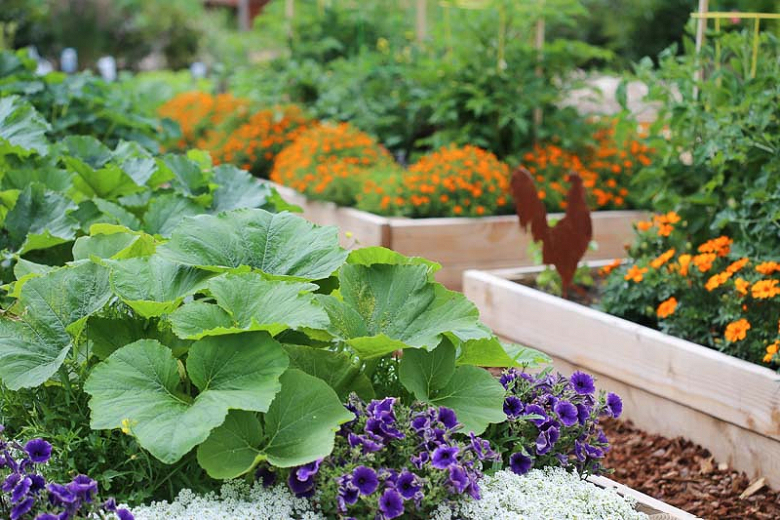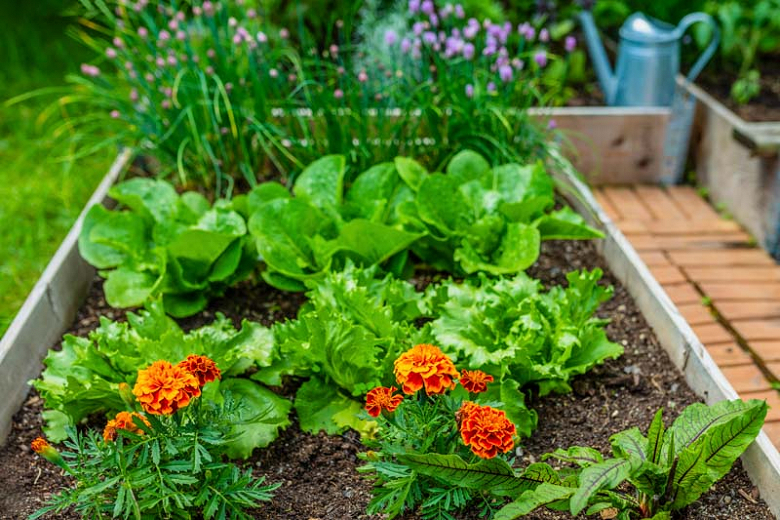Alyssum: The Secret Weapon Of Companion Planting
Alyssum: The Secret Weapon of Companion Planting
Alyssum is a beautiful, low-maintenance annual that is a favorite of gardeners for its sweet fragrance and delicate blooms. But did you know that alyssum is also a valuable companion plant? That's right, this little flower can help to deter pests, attract beneficial insects, and improve the health of your garden plants.
In this blog post, we will explore the benefits of companion planting with alyssum. We will also discuss how to choose the right type of alyssum for your garden, and how to plant and care for it.
Benefits of Companion Planting with Alyssum
There are many benefits to companion planting with alyssum. Here are just a few:
- Deter pests. Alyssum's strong fragrance can help to deter pests such as cabbage moths, aphids, and whiteflies.
- Attract beneficial insects. Alyssum's nectar attracts beneficial insects such as ladybugs, hoverflies, and bees. These insects help to control pests and pollinate your garden plants.
- Improve soil health. Alyssum's roots help to improve soil aeration and drainage. They also release nitrogen into the soil, which can benefit other plants.
- Enhance the appearance of your garden. Alyssum's bright flowers add a touch of color and beauty to any garden.
Choosing the Right Type of Alyssum
There are many different types of alyssum available, so it is important to choose the right type for your garden. Some factors to consider include:
- Hardiness zone. Alyssum is a hardy annual, but some varieties are more cold-tolerant than others. Choose a variety that is hardy in your USDA hardiness zone.
- Height. Alyssum plants come in a variety of heights, from 6 inches to 18 inches tall. Choose a variety that will fit in the space you have available.
- Bloom color. Alyssum flowers come in a variety of colors, including white, yellow, pink, and purple. Choose a color that will complement the other plants in your garden.
Planting and Caring for Alyssum
Alyssum is easy to plant and care for. Here are the basic steps:
- Choose a sunny location with well-drained soil.
- Amend the soil with compost or other organic matter.
- Plant the alyssum seeds or seedlings 1 inch deep and 6 inches apart.
- Water the plants regularly, especially during the first few weeks after planting.
- Fertilize the plants every few weeks with a balanced fertilizer.
- Deadhead the flowers regularly to encourage more blooms.
Conclusion
Alyssum is a valuable companion plant that can benefit your garden in many ways. It is easy to plant and care for, and it comes in a variety of colors to choose from. So if you are looking for a way to improve the health and beauty of your garden, consider adding alyssum to your planting plan.
Alyssum is a beautiful and beneficial flower that can be a valuable addition to any garden. It is a low-maintenance annual that attracts pollinators and helps to deter pests. But did you know that alyssum can also be used as a companion plant?
Companion planting is the practice of planting certain plants together to benefit each other. Alyssum is a great companion plant for a variety of vegetables, including broccoli, Brussels sprouts, cabbage, eggplant, and lettuce. It can help to repel pests, attract pollinators, and improve the overall health of your garden.
If you are interested in learning more about companion planting alyssum, I recommend visiting Gardenia Inspiration. This website has a wealth of information about companion planting, including specific recommendations for plants that grow well together.
FAQ of companion planting alyssum
Q: What are the benefits of companion planting alyssum?
A: Alyssum is a great companion plant for many different types of vegetables and flowers. It has a number of beneficial qualities, including:
- Attracting beneficial insects, such as hoverflies, which help to control pests.
- Repelling pests, such as aphids and cabbage moths.
- Improving soil quality by suppressing weeds and providing organic matter.
- Drowning out weeds with its rapid growth.
- Adding beauty and fragrance to the garden.
Q: What vegetables and flowers pair well with alyssum?
A: Alyssum can be paired with a variety of vegetables and flowers, but some of the best pairings include:
- Peppers: Alyssum helps to deter pests from peppers, such as aphids and whiteflies. It also adds beauty and fragrance to the garden.
- Lettuce: Alyssum helps to repel aphids from lettuce, and it also helps to improve the flavor of the lettuce.
- Brassicas: Alyssum helps to deter pests from brassicas, such as cabbage moths and aphids. It also helps to improve the flavor of the brassicas.
- Carrots: Alyssum helps to attract beneficial insects, such as ladybugs, which help to control carrot pests.
- Sunflowers: Alyssum helps to attract beneficial insects, such as ladybugs, which help to control sunflower pests. It also helps to suppress weeds around sunflowers.
Q: What are the best conditions for growing alyssum?
A: Alyssum prefers full sun, but it can tolerate partial shade. It prefers well-drained soil that is rich in organic matter. Alyssum is a relatively drought-tolerant plant, but it will benefit from regular watering during dry periods.
Q: How do I plant alyssum as a companion plant?
A: Alyssum can be planted as a companion plant in a variety of ways. You can plant it between rows of vegetables, or you can plant it around individual plants. You can also plant it in a container or in a hanging basket. When planting alyssum as a companion plant, it is important to choose plants that have similar growing requirements.
Q: What are some common pests and diseases that affect alyssum?
A: The most common pests that affect alyssum are aphids, whiteflies, and spider mites. The most common diseases that affect alyssum are powdery mildew and rust. These pests and diseases can be controlled with insecticidal soap, neem oil, or horticultural oil.
Image of companion planting alyssum
- Alyssum and broccoli. Alyssum is a good companion plant for broccoli because it helps to deter pests. The strong scent of alyssum can repel cabbage moths, aphids, and other insects.

- Alyssum and cabbage. Alyssum is also a good companion plant for cabbage. It helps to deter pests and diseases, and it can also help to improve the flavor of the cabbage.

- Alyssum and lettuce. Alyssum is a good companion plant for lettuce because it helps to deter aphids and other pests. The strong scent of alyssum can also help to keep rabbits away from lettuce plants.

- Alyssum and tomatoes. Alyssum is a good companion plant for tomatoes because it helps to attract beneficial insects. The flowers of alyssum are a favorite food of ladybugs, lacewings, and other predators of pests.

- Alyssum and pansies. Alyssum and pansies are both cool-season annuals that can be planted together in the spring. They make a beautiful combination, and they also help to deter pests.
Post a Comment for " Alyssum: The Secret Weapon Of Companion Planting "